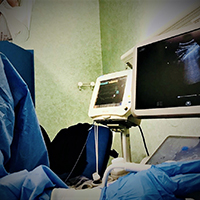 Smart Citations
Smart CitationsSee how this article has been cited at scite.ai
scite shows how a scientific paper has been cited by providing the context of the citation, a classification describing whether it supports, mentions, or contrasts the cited claim, and a label indicating in which section the citation was made.
Lung ultrasound in COVID-19: a useful diagnostic tool
Coronavirus disease 2019 (Covid-19), caused by a novel enveloped RNA betacoronavirus, has recently been declared a public health emergency by the World Health Organization (WHO). The lack of knowledge at the beginning of the pandemics, associated with the inherent risk of infective spreading, makes initial recognition and management particularly complex, in terms of defining effective diagnostic and therapeutic protocols. In the Emergency setting, Lung Ultrasound (LUS) can play an important role in the management of patients with SARS-CoV2-related pneumonia, expanding from the initial diagnosis to the subsequent monitoring and follow-up. Among many other potential advantages (such has the absence of ionizing radiation, its inherent costeffectiveness, and bedside repeatability), LUS provides immediate diagnostic response and might prevent the risk of spreading the infection by moving the patient from the Emergency Room to the Radiology facilities. Aim of this short review is to define the potential role of lung ultrasound in Covid-19 patients, according to the evidence in the medical literature
Downloads
Citations
10.1002/jcu.22947
10.1002/jum.15755
10.3390/app122110869
10.3390/bioengineering10030282
10.1016/j.compbiomed.2021.104742
10.1007/s11547-020-01236-5
10.4081/ecj.2021.9747
10.3390/diagnostics11050761
10.4081/ecj.2022.10385
How to Cite
PAGEPress has chosen to apply the Creative Commons Attribution NonCommercial 4.0 International License (CC BY-NC 4.0) to all manuscripts to be published.

 https://doi.org/10.4081/ecj.2020.9017
https://doi.org/10.4081/ecj.2020.9017





